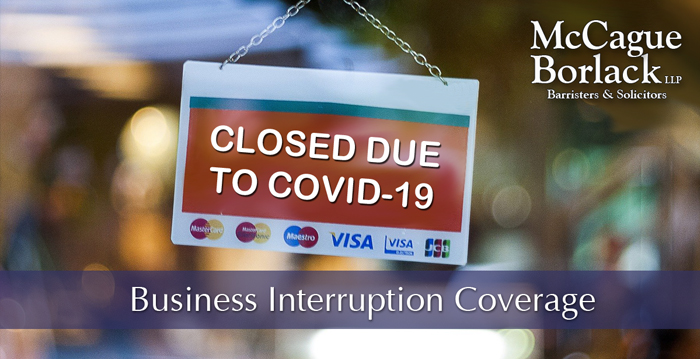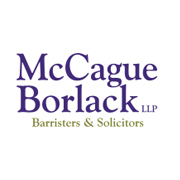On May 14, 2009, an unanticipated leak (the “Leak”) of “heavy” water containing radioactive Tritium was discovered coming through the calandria walls in the NRU. The Leak caused the NRU to shut down (the “Shutdown”) for a period of 15 months, causing a significant loss of profits to MDS. The Leak was “triggered by an unanticipated and unpredicted microscopic attack of the calandria wall due to the presence of an aggressive agent... that caused a through-wall leak.”2
At the time of the Shutdown, MDS was insured under a worldwide All-Risks policy (the “Policy”) issued by the Insurer defendant, Factory Mutual Insurance Company (the “Insurer”).
All-Risks Policy: Exclusion(s) and Extension(s)
The Policy provided standard coverage(s) for “property as defined in the Policy against all risks of physical loss or damage, except as excluded while located as described in the Policy.”3 The Policy excluded coverage for the “loss of market or loss of use”, and for “interruption of business”, except to the extent provided under the Policy.4 The Policy excluded physical damage caused by corrosion and nuclear radiation, however, if physical damage not excluded by the Policy occurred, only resulting damage was insured.
MDS had purchased Contingent Time Element business interruption coverage in the Policy... |
MDS had purchased Contingent Time Element business interruption coverage in the Policy, which insured MDS' loss of profits, if a supplier had an interruption of production caused by physical loss or damage, unless a Policy exclusion applied to preclude coverage.5 The Insurer argued, unsuccessfully, that the corrosion and nuclear radiation exclusion(s) to the Policy precluded coverage. The Insurer also argued there must be tangible physical damage to qualify for the resulting physical damage exception.6 MDS argued that a broader interpretation of resulting physical damage should apply to include not only tangible damage but also impairment of use or function.7 Justice Wilson agreed with MDS.
Resulting Physical Damage
Physical damage, resulting physical damage and resultant physical damage were not defined in the Policy. Justice Wilson considered a Nova Scotia Small Claims Court case, Jessy's Pizza v. Economical Mutual Insurance Co.8
In Jessy's Pizza, an oil spill under the Plaintiff's business, caused the Plaintiff to close its business due to an overwhelming and persistent smell of oil at the premises. The floor of the restaurant was removed and the contaminated soil below was dug out. The adjudicator in Jessy's Pizza held that the physical damage coverage applied to “both the tangible direct damage to the floor, as well as to the fumes in the restaurant as ‘the fumes physically damaged the contents of the business' as the continued operation of the restaurant business was untenable.”9 Similarly, in MDS v. FM, Justice Wilson held that the “leak of heavy water required the shutdown of the NRU rendering it unusable. With continued operation, there was a very real imminent risk of harm.”10
Justice Wilson held as follows:
- A broad interpretation of resulting physical damage to include impairment of use confirms the principle that exceptions to exclusions should be interpreted broadly.
- The Policy must be considered as a whole, and when the Policy exclusions and coverage provision(s) are read with the resulting physical damage exception, it appears clear that the meaning of resulting physical damage contemplates loss of use of the NRU.11
- In assessing the objectively reasonable expectations of the parties as to the meaning of physical damage, it makes common sense that if the unanticipated leak of heavy water from the calandria precipitates the shutdown of the NRU, that the circumstance rendering the NRU inoperable would constitute resulting physical damage.12
- Applying the principles in Ledcor Construction Ltd. v. Northbridge Indemnity Insurance Co.,13 to interpret the meaning of resulting physical damage, a broad definition of resulting physical damage is appropriate in the factual context of this case to “interpret the words in the Policy to include impairment of function or use of tangible property caused by the unexpected leak of heavy water.”14
- This interpretation is in accordance with the purpose of all risks property insurance which is to provide broad coverage. To interpret physical damage as suggested by the Insurer would deprive the Insured of a significant aspect of the coverage for which they contracted, leading to an unfair result contrary to the commercial purpose of broad all risks coverage.15
Justice Wilson considered the purpose of all-risks coverage... |
Justice Wilson considered the purpose of all-risks coverage, and in particular the purpose of all-risks coverage in the context of coverage for loss of profits in light of the facts of this case. The factual context and the principles of policy interpretation, which are well established in the jurisprudence, were determinative of Justice Wilson's decision. Justice Wilson noted that it was known that MDS and the Insurer were actively discussing an increase in the Contingent Time Element coverage for a loss of profits, in the year before the Leak. MDS had already paid a significant amount in premiums for the Contingent Time Element coverage from 1993 and continued to pay the premiums for the Policy.
In this case, it is important to note that the Insurer conceded that MDS' loss of profits fell within the Insuring Agreement. The point of contention was the applicability of an exclusion and a resulting damage exception. Importantly, Justice Wilson found that both parties had anticipated coverage for the loss being claimed. Based on the specific facts of this case, Justice Wilson concluded that the Contingent Time Element business interruption coverage in the Policy insured MDS' loss of profits if a supplier had an interruption of production, as in this case, resulting from physical damage to the NRU.
As noted in our previous article, COVID-19: Business interruption: Are you covered?, in determining coverage for any such loss, the courts will be guided by the well-founded principles of policy interpretation, the specific facts of the loss and what the parties (insured and insurer) contemplated at the time the policy was issued.
Present-Day: COVID-19
Generally, Business Interruption policies contemplate coverage when there is a nexus to a loss of tangible property and it is our view that Justice Wilson's decision did not change that. In business interruption losses allegedly resulting from the COVID-19 pandemic, there will likely be no such nexus. Rather, pandemic coverage is something that should be specifically purchased.
In 2018, Marsh partnered with Munich Re and Metabiota to create PathogenRX, an integrated pandemic risk quantification and insurance solution that provides financial protection to businesses and their global operations, specific to pandemics such as COVID-19.16 Currently, the COVID-19 pandemic has shut down multi-million dollar sports arenas, commercial venues and multi-national businesses across the World. In line with these closures, the All England Club and the Committee of Management of The Championships announced the cancellation of The Championships 2020, more commonly known as Wimbledon, for the first time since World War II.
NuProperty Casualty 360 reported,
"Wimbledon has shown it is one step ahead of most businesses by having insurance in place for current events," Ben Carey-Evans, insurance analyst at GlobalData, said in a statement. "It has been paying around £1.5m per year in pandemic insurance since it took notice of the SARS outbreak in 2003. It has paid out roughly £25.5m over the 17-year period, and it is set to recover around £114m, making it a very sensible investment."17
Takeaways
- Despite the reference to ''all-risk” in all-risk policies, there are limitations.
- It is not a black and white determination but the devil is in the detail: the facts matter.
- What were the reasonable expectations of the parties?
It appears as though both the MDS decision and the recent payout to Wimbledon re-affirm the old adage — you really do get what you pay for.
- 2020 ONSC 1924 [“MDS v. FM”].
- Ibid at para 415.
- Ibid at para 179.
- Ibid at para 454.
- Ibid at para 189.
- Ibid at para 467.
- Ibid at para 468.
- 2008 NSSM 38 [“Jessy’s Pizza”].
- Ibid at para 474.
- MDS v. FM at para 511.
- MDS v. FM at para 462.
- MDS v. FM at para 517.
- 2016 SCC 37, [2016] 2 S.C.R. 23.
- MDS v. FM at para 518.
- MDS v. FM at para 519.
- PathogenRX - An Innovative Solution for Pandemic and Epidemic Risks.
- Turner, Heather. Wimbledon's Pandemic insurance coverage results in $141 million payout, April 10, 2020.


